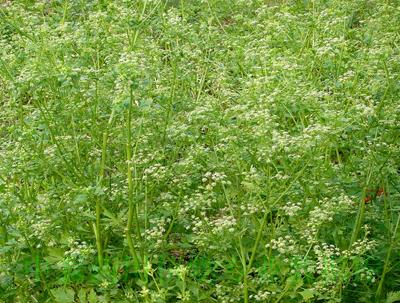| [English Name] | Wildcelery Herb | |
| [Chinese Name] | 旱芹 | |
| [Pinying Name] | Hanqin | |
| [Latin Name] | Apii Graveolentis Herba | |
| [Genera] | Umbelliferae | |
| [Efficacy] | Antipyretic drug | |
| [Pictures] | Plant picture | Drug picture |

|
||
| [Alias] | ||
| [Source] | ||
| [Plant morphology] | ||
| [Distribution] | ||
| [Gathering and processing] | ||
| [Characteristics] | ||
| [Ecology] | Wildcelery Herb prefers cold cool and moist climate,is half-hardy vegetable;doesn’t resistant to high temperature and dry.It can resistant freezing temperature less than |
|
| [Chemical composition] | ||
| [Pharmacological activities] | ||
| [Clinical trial] | ||
| [Properties] | Taste: sweet, astringent, slightly bitter; property: cool. |
|
| [Medical and other Uses] | Function: calming liver, removing fever, dispelling wind, promoting diuresis, arresting bleeding, detoxicating. Syndromes to be treated: dizziness, headache, cough, wind and heat, jaundice, urine leaching pain, hematuria, metrorrhagia, vaginal discharge, sore swollen poison. |
|
| [Dosage] | Oral administration: decoction, dry 9~ Topical application: in right amount, or smashed and smear on the skin, or wash with the decoction. |
|
| [Cautions] | Patients with food stagnation eat this herb will cause disease. Not used in the glae patients. |
|
| [Traditional usage] | ||
| [Toxicological studies] | ||
| [Pharmaceutical preparations] | ||
| [References] | ||